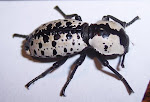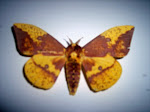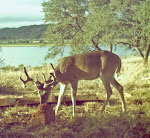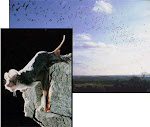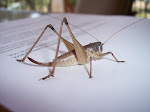Many, many years ago there was a nomadic band of hunter-gatherers that were foraging through what we now call the Hill Country of Texas. In fact, they were camped on the north side of a river just above a set of rapids that marked the beginning of a steep canyon to the east. It was late spring and it was a time of abundance.
The younger women were wading in the shallows gathering fresh water clams and placing them in the baskets they had woven from reeds the previous evening. The recent rains made it easy for the older women to dig the roots that they were collecting. The older boys were spearing eels and fish in the river but mostly they were trying to attract the attention of the girls. The leader of the group, Trupp, left the half dozen men who were making arrowheads and wandered off by himself. There was not much leisure time in his life but when he could, he took a little time to be off by himself.
Trupp slowly walked fifty feet up the slope to the edge of a small meadow overlooking the river and sat down on a rock outcropping, where he could keep an eye on things. He noticed that there were imprints of clam shells in the rock and a smooth hole about 8” in diameter had been worn all the way through the rock. He reasoned that the hole had been created by the action of swirling water and harder, small stones during a flood. He had seen similar things in the river beds, but, he mused, “That must have been quite a flood to reach this high.” Some giggling caught his attention and his eyes caught the movement of four little kids scrambling up the hill in his direction. “Well”, he thought, “so much for peace and quiet this afternoon.”
“Tell us a story Trupp! Please! Please! Just one more!” Trupp gave a little smile, waved the children up and told the kids to gather around him. He liked to tell the children stories and, after all, he felt it helped pull the clan together. At times like this, he let his imagination fly…….
“OK kids, listen up. One day long ago, the Great Spirit decided to make a special present for His human children. He took up his basket and started gathering things: he picked some green grass after an early spring rain, a yellow ray from the warm summer sun, shimmering blue light from the sky above, orange and purple flowers from the fields just like the ones around us now, and red and gold leaves from the trees in the Harvest Moon. Then He added the whiteness from cornmeal, the children’s shadows as they were playing, and the black from a beautiful maiden’s hair. Once he gathered all these beautiful colors, he used them to create butterflies.
His children were very pleased, and the Creator smiled as He looked out over the fields and watched the human children dance with the beautiful butterflies in the warm summer sun. Afterwards, he gathered His human children around him; just like you are sitting around me right now.
The Great Spirit told them that the silence of the butterflies was going to be the most precious gift of all to His children. Since a butterfly can make no sound, the butterfly can not reveal any secrets to anyone but the Great Spirit, who hears and sees all.
He told His children that if they want a special wish to come true, they must capture a butterfly and whisper their heart’s desire to it. They must then release the butterfly unharmed. Since butterflies make no sound, they cannot tell the wish to anyone but Him and they will fly to the heavens. Since they are so colorful, the butterflies will easily be seen by the Great Spirit and He will be so pleased that the butterfly was given its freedom that the whispered prayers will be quickly granted.”
It was the oldest child who raised his voice and said “Trupp, is that true? Can butterflies really talk with the Great Spirit?”
“Well,” said Trupp, “I don’t know for sure but why don’t you try it? Take the younger children with you and see if you can catch a butterfly, whisper it your wish, and let it go unharmed.”
The day passed; followed by many, many others.
Yesterday afternoon, my grandkids were playing down at the edge of Canyon Lake Mystic Shores
I noticed that there were imprints of clam shells in the rock where I was sitting and a smooth hole about 8” in diameter had been worn all the way through the rock. I guess that the hole had been created by the action of swirling water and harder, small stones during a flood. I have seen similar things in the river beds, and I thought “That must have been quite a flood to reach this high.” Some giggling caught my attention and my eyes caught the movement of my four grandchildren scrambling along the shoreline in my direction. “Well”, I thought, “so much for peace and quiet this afternoon.”
“Tell us a story Grandpa Clay! Please! Please! Just one more!” I couldn’t help but grin, waved the children over and told the kids to gather around. I like to tell the children stories and, after all, it helps pull the family together.
“All right kids, who would like to hear a story about butterflies?”
Clay
(Author’s note: There are many ways of understanding nature and stories/tradition may be just as important as scientific names. Besides, to quote a friend, a little whimsy isn’t bad.)
